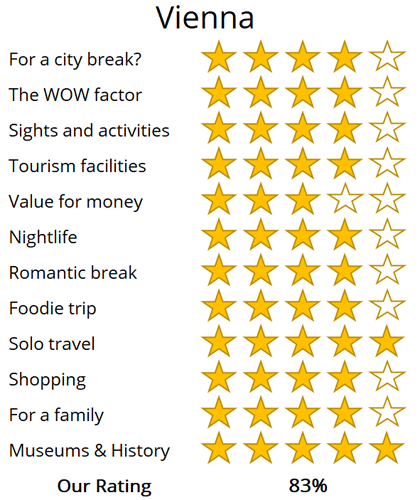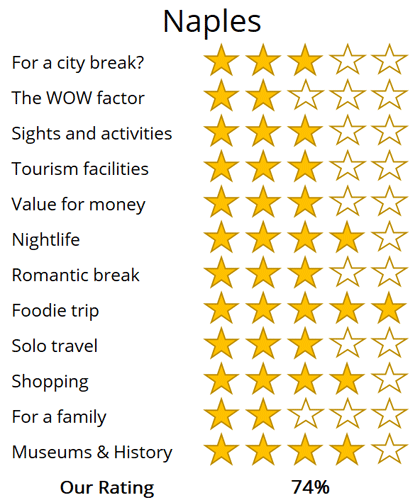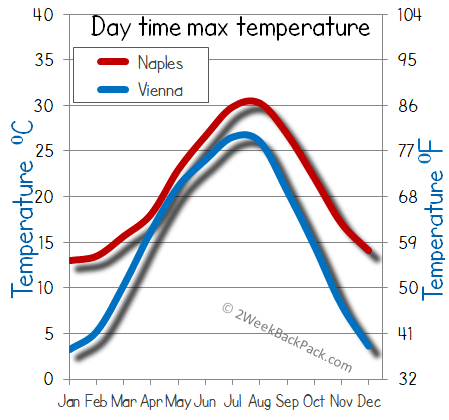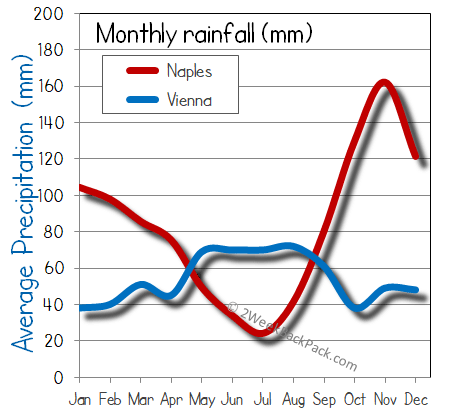WhereToGoForMyHoliday.com
The best destination comparison site!
WhereToGoForMyHoliday.com
The best destination comparison site!
Vienna or Naples, which is better for your holiday in 2024?
Vienna and Naples both offer unique and enticing experiences, but which one should you choose for your city break or holiday?
We understand your dilemma. There is an abundance of travel guides for both cities, but few actually comparing them, and advising you which is the better for your trip.
This article will provide our unbiased and independent views of Naples and Vienna, hopefully making your choice that little easier.
The article is structured into several sections, each of which can be directly accessed through the following links:
• Introduction to the cities
• Scores and ratings
• Which one should I, friends, or family visit?
• When to visit and weather
• Who is the city suited for?
• The perfect 48hours (with map)
• Tourism details (where to stay? airport details?)
Introduction to Vienna and Naples
The erstwhile epicentre of the great Habsburg empire, Vienna, is just as grand and glorious as you might expect. The Hofburg palace spreads is vast Baroque wings in the heart of the town, framing manicured gardens topped with equestrian statues.
There's the Belvedere, a patchwork of orangeries and old court rooms. There are opera houses and theatre rooms and the elegant façades of the Schönbrunn. It's enough to keep the camera a-clicking for several days.
But Vienna isn't only about 18th-centry grandeur. This is a lived-in European capital. It's got gritty nightlife districts that offer up beating boat bars on the Danube. It's got handsome parks packed with pine forests and duck ponds. There are vibrant markets with food from all around the globe. And you've got one of the world's most active café cultures, with coffee shops where the likes of Freud and Trotsky were once regulars.
In many ways, Naples is split in two halves; a town of shadow and light.
There's the Naples of pizza dough and La Dolce Vita, which is all about kicking it by the azure Tyrrhenian Sea with good food and great wine.
Then there's the gritty city, whose reputation comes from the Camorra mafiosos and the ramshackle alleys around Spaccanapoli street. Both are immersive and interesting in their own right
Put simply, Naples is one of the most authentic and enthralling cities in Italy. The self-proclaimed capital of the south, it's got Roman history and gorgeous landscapes in equal measure.
It promises something for honeymooners, backpackers, foodies, and outdoorsy types, but won't sugar-coat the experience with anything special for tourists.

The harbour front in Naples

The classic skyline view of Vienna from Saint Stephen’s Cathedral, with its uniquely tiled roof
Vienna vs Naples: City Ratings
Summary
Where would I journey for a personal escape?
Vienna
Where would I send my parents for a memorable visit?
Vienna
Where's the ideal destination for my adventurous 19-year-old cousin?
Vienna
Where should my food-obsessed friend indulge their culinary passions?
Vienna
Note: The above comparisons are weather-independent and are based on travel during the most opportune times of the year. Details about the ideal travel seasons are elaborated upon later in this article.
In the sections that follow, you'll find a comprehensive comparison between these two fascinating cities. This includes recommendations on the duration of stay, the best times to visit, and tailored 48-hour itineraries for each city.
The final segment delves into practicalities for your travels, such as the best airport to fly into, the optimal districts for your accommodation, and insider tips, for when you come to explore the city.
We hope that you find all of this information useful, in planning your next exciting trip!
Destination details
How long to spend each city?
That's a tricky one. Naples itself can be seen from tip to toe in just a couple of days. We'd say around 48 hours is perfect for tasting Neapolitan pizzas in legendary L'Antica Pizzeria da Michele and feeling the vibes down lively Spaccanapoli – the main drag in the historic centre.
For a longer stay of five to seven days, there's a catch: A lot of Naples's main draws are outside of town. Think the likes of Pompeii, the soaring crater of Vesuvius, and the Amalfi Coast. To add those on, you'll need to plan to come here for considerably more time.
Vienna is big and brimmingwith sights. History buffs and culture vultures will want at least three or four days to check off the bucket-list attractions. That's because the mainstay palaces and the most immersive museums each deserve at least half a day to themselves. You'll also need some time to wander the Old Town area and hop the famous Viennese cafés.
If you're eager to explore all of the facets of Vienna, then you'll certainly need much longer than just your average city break. Whole weeks can be spent enjoying the buzzy squares and the statue-filled parklands. What's more, there are day trips aplenty in the region, ranging from the pine forests of the Wienerwald to the rising foothills of the Salzburger Alps.
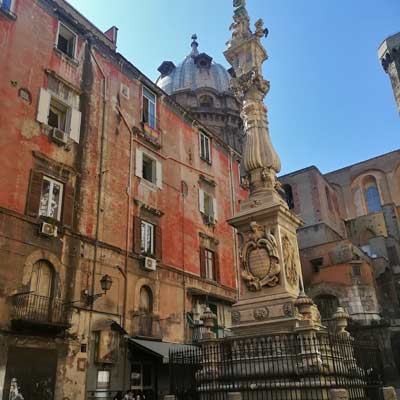
The obelisk of San Gennaro in the Piazza Riario Sforza

The Schönbrunn Palace, Vienna one of the grandest palaces of central Europe
Vienna in the summer can't be beaten. When the sun shines, the city's parks and bars come alive. The best weather is usually between June and August, but beware that things can get hot and humid, with temperatures cranking up over 30 Celsius. The good news is that there are some strands and swimming spots along the Danube for cooling off. If you prefer things a little milder, May and September are usually also dry and warm.
On the flip side, Vienna in winter is a real wonderland. The Austrian capital hosts some of the most enchanting Christmas markets in Europe. You'll find those brewing up hot chocolates and mulled wine on Rathausplatz and in the grounds of the Schloss Schönbrunn. They get into full swing in December, when it's common to get dustings of snow and sub-zero temperatures – boots and woollies will be required.
Spring is the best time of year in Naples. This southern city gets warm nice and early, so you can expect April highs in the 20s and even enough sun to hit the beaches of Gaiola and the local lidos if you want to take a dip in the Med. There are fewer other travellers about before the summer rush too, which means you'll find it more pleasant strolling the historic centre and Pompeii.
Of course, that's not to say the summer is bad in these parts. It most certainly isn't. Reliable warmth and loads of sunshine, topped off with a buzz about town, help make the months between June and August great options. Just be prepared to pay extra for hotels and flights, and don't expect the city to be quiet.
Naples is a raw and immersive Italian city. It's got pizza places that are frequented by locals. It's got wine bars serving gorgeous Campanian tipples. It's lived-in and gritty and real. That makes it perfect for city hoppers who like atmosphere and energy. And the joys don't end there…
Just around the Bay of Naples are two of the country's most impressive archaeological sites: Pompeii and Herculaneum. They'll entertain the history lovers, along with the likes of the Castel dell'Ovo and the vast Museo Archeologico Nazionale. Loved-up duos might also want to make Naples a pitstop on a couple's break to the impossibly gorgeous Amalfi Coast that lies to the south.
Naples isn't for those who like small, easy-going towns where there's lots of room. It's crammed between the volcanos and the sea, so things are compact in the centre. It can also be quite hectic, with touts and traffic.
Packing in handsome palaces, Austrian beer houses, Alpine forests, cool cafés, art-filled galleries, and a buzzy nightlife, Vienna satisfies all sorts of travelers. You can easily fill whole trips in the museums alone. Days can be whiled away flitting between coffee shops. Nights can be spent in opera shows or glugging frothy beers in hipster bars.
Don't go thinking that Vienna is the great Austrian outdoors. This might be the country of the Alps, but the mountains are still at least an hour's train ride to the west. What's more, there's not a beach in sight. The best that landlocked Central Europe can offer in the way of sand and water is a few artificial swimming areas along the River Danube.

The cascade fountain at the Belvedere, Vienna
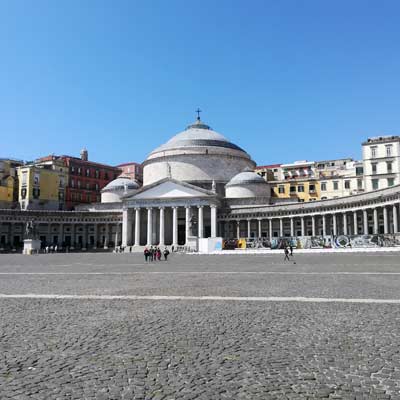
The Piazza Plebiscito is the grand square of Naples
48hours in Vienna
So, you only have two days in the Austrian capital? Get ready for an itinerary that's packed to bursting with all sorts. From Neo-Classical Habsburg mansions to strolls on the Danube canals to mornings in buzzy market areas, there's something for a whole host of traveler types in these parts.
Day 1: Morning on the Heldenplatz. This manicured urban garden is one of the most iconic squares in Vienna. The huge equestrian statue of Archduke Charles of Austria is what will probably catch the eye but remember that the plaza was also the place where Hitler announced the annexation of Austria in 1938. Nearby, the Hofburg stands proud.
On a quick, two-day itinerary, it's probably best not to delve inside. The exhibits can easily take hours on end, though it's a must if you're a lover of 18th-century European history. Take your photos of the mighty Neo-Classical exterior and then move straight to the streets to the west. They herald the Innere Stadt (the Old Town) of Vienna. Cobbled lanes and little archways form a maze here that's lovely to get lost in. A lunch stop (read: strudel stop) at Café Central is a doozy. Gold-leafed ceilings and elegant royal portraits gild the interior, though the main draw is sitting where Freud and Trotsky once sat sipping their coffees.
Later on, head north around the ring roads to the Sigmund Freud Museum. It's a fine introduction to the life and works of the founder of psychoanalysis, with the original doctor's couch that his patients would sit on. Beeline straight to Prater when the evening closes in. You can get there on the underground, emerging into Vienna's famous inner-city theme part with its twirling Ferris wheel and fairground attractions.

The Prater amusement park with its traditional rides and the Wiener Riesenrad Ferris wheel
Day 2: The early hours on the Naschmarkt offer some of the best people watching in the city. Fruit sellers call out prices while locals chow down on pretzels and white beer in the stalls. This vibrant bazaar is also the perfect place to grab any Viennese souvenirs and foodstuffs. A ubiquitous fix of palaces comes next. We'd recommend choosing one of the big two – the Belvedere Palace or the Schönbrunn. Both are stunning but the former is the easiest to get to. Both will also likely take a couple of hours, especially if you want to explore the sprawling grounds as well as the interior court rooms of the old Habsburg elite.
That will still leave some time in the afternoon to breeze over to the Danube Canal. Abuzz with boat bars and hole-in-the-wall eateries, it can help balance out the culture with a little hedonism. The district of Leopoldstadt is right behind, replete with hipster coffee joints and cocktail emporiums. An alternative way to cap off your weekend could be a jaunt to the hills of the Vienna Woods (the Wienerwald). They offer lookouts – and gorgeous sunsets – above the capital just behind the area of Hütteldorf.

Vienna is not just historic relic, there are modern curiosities such as the Hundertwasser House, designed by an artist who wished no straight lines in his building......
Everything from millennia-old villas to rich art collections is on offer in this 48-hour guide to Naples. Oh, and there are plenty of chances to devour pizza – it's considered the very best in Italy.
Day 1: Start in the Quartieri Spagnoli. Ramshackle and rough around the edges, it's the perfect combo of Neapolitan grit and charm. There's bound to be a cafeteria serving cannoli (crunchy Sicilian pastries) and cappuccino there that takes your fancy.
You'll need the energy, because your next destination is the acclaimed Naples National Archaeological Museum. It's known to have one of the largest collections of Roman artifacts anywhere in the world, but the standout highlight is surely the Alexander Mosaic, reconstructed from the floors of Pompeii's opulent House of the Faun.
Once you're done in there, head south to the sleepless street of Spaccanapoli. Literally meaning 'the street that divides Naples', it does exactly as that implies. It runs right through the heart of the city, with drooping washing lines, street-food vendors and age-old churches looming on both sides. It will take a while to walk its two kilometres but it's all about breathing in the urban energy. What's more, the iconic L'Antica Pizzeria da Michele sits at the eastern end.
You'll be rewarded there by one of the best pizzas in town – choose between marinara (just fresh tomato passata and garlic) and bufalina (with buffalo mozzarella). After lunch, make for the port area.
That's crowned by the turrets of the Castel Nuovo, a grand fortification that has a history of more than 800 years. Behind that comes vast Piazza del Plebiscito. Prepare to be stunned by its sheer size and grand horse statues. For evening, a few cocktails and some tasty homecooked pasta awaits in the osterias of stylish Chiaia district.
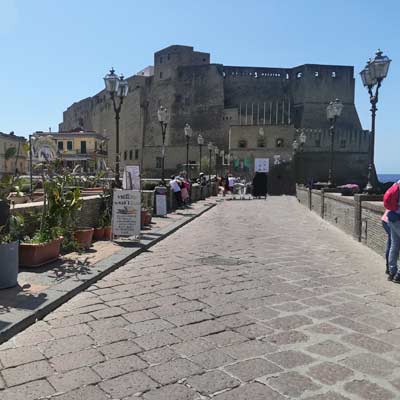
The Castel dell'Ovo (Egg castle) on the harbour front of Naples
Day 2: Rise early and get to the platforms of Naples Centrale station. That's where the trains depart for Pompeii in the morning. You might just have heard of that place – it was once an entire Roman resort town for the nobles and elite of the empire.
That is, until Mount Vesuvius suddenly erupted in 79 AD and flooded it with lava and ash. These days, the site is an amazing and haunting archaeological dig, with whole streets, entire villas, and even brothels complete with Roman wall art just waiting to be discovered.
It's likely Pompeii will take more than half of the day, while the most devoted history buffs can add on a trip to Herculaneum to boot. If not, head back to Naples city and go straight to the hilltops where the Castle of St Elmo keeps watch. That's the Vomero district, and it's famed for its sweeping panoramas of the Gulf of Naples and Mount Vesuvius. With that as the backdrop, find yourself a traditional trattoria or pizzeria and dine with a view of the metropolis to cap off the trip.

Pompeii was covered in 6m of volcanic ash when Mount Vesuvius erupted in AD 79
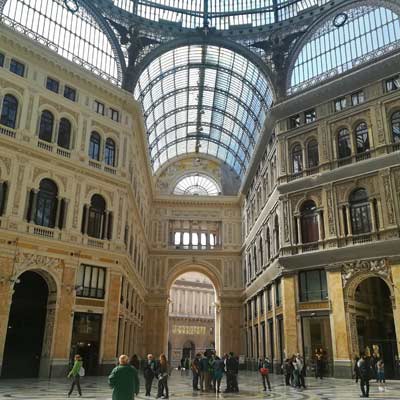
The elegant Galleria Umberto I shopping gallery in Naples
Capodichino Airport, or Naples Airport, is the main gateway to the city by air. It's the fifth largest in the country, so should have lots of low-cost and premium services jetting into its runways. There's a metro line to the terminal in the works, but for now arrivals will need to use the Alibus to Naples Centrale station. Tickets cost about €5 each way and the travel time is roughly 15 minutes outside of rush hours.
Centrale Station is a main stop on the north-south railway line through Italy. It's easy to get there on high-speed links from Rome and even Milan. That's one of the most glamourous ways to arrive in Campania, offering gorgeous views of the countryside before pulling right into the heart of the city.
When it comes to booking hotels in Naples, take some time to consider each neighbourhood one by one. Most travellers are drawn to the Historic Centre (or Centro Storico in local speak). That's the home of the Duomo and the buzzing lane of Spaccanapoli.
It's probably one of the pricier and more lively areas to stay. Alternatively, go to Vomero for boutique B&Bs with great views, not to mention proximity to some of the coolest hipster eateries and cafes. Or, choose the down-to-earth Quartieri Spagnoli, which is filled with hostels and guesthouses that shouldn't break the bank.
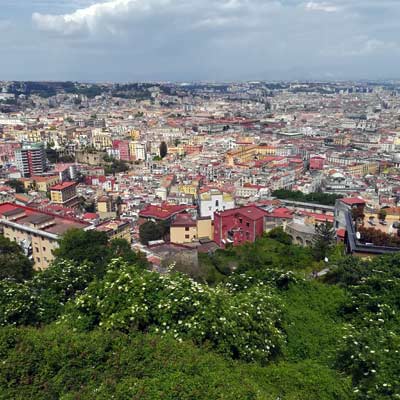
The view over Naples from the surrounding hills
Naples has a reputation for being Italy's roughest and most dangerous place.
It's true that crime rates are higher here than in the north. What's more, the mafia are still in action in these parts. You'll want to be a little more careful walking around areas like the Naples Centrale station and Quartieri Spagnoli.
Also try to stick to more touristy central districts, and don't walk alone at night. On top of that, be wary of street touts selling stolen goods, and be on the guard for pickpockets and drive-by thieves on scooters.
Vienna is among the safest and most liveable cities in the world – at least if the stats are to be believed. Of course, you'll need to have your wits about you as if you were traveling anywhere. Pickpocketing, fake tour guides, and taxi scams do occur, though they aren't common as in other European capitals.
Getting around should be a cinch in the Austrian capital. The U-Bahn is ridiculously efficient. It links with above-ground rail lines and trams on a single-ticket network to make going from A to B a pleasure, not a chore.
Single trip fares sit at €2.40, while a 48-hour travel card costs €14.10. Don't be tempted to ride the subway without buying tickets. This is possible because the platforms aren't gated, but there are regular checks and hefty fines to match.

The Gloriette is situated on one of the highest points of Vienna and provides one of the best views of the city and the Schönbrunn Palace.
The best arrival point for those flying is Vienna International Airport. It's a well-equipped, modern port on the south-eastern side of the capital. Direct S-Bahn trains link the centre to the terminals, or you can hop on the premium Railjet from Vienna Hauptbahnhof. There's also a shuttle link provided by AirportLines Bus, costing €13 per person, return.
Picking hotels in Vienna can sometimes be a tricky business. First-time visitors can't go wrong if they aim to stay in the Old Town (the Innere Stadt), but rooms there can be pricy and sell out fast. Good alternatives include the hip and happening district of Leopoldstadt (great for dining with a youthful vibe) and any of the blocks that come off Naschmarkt.
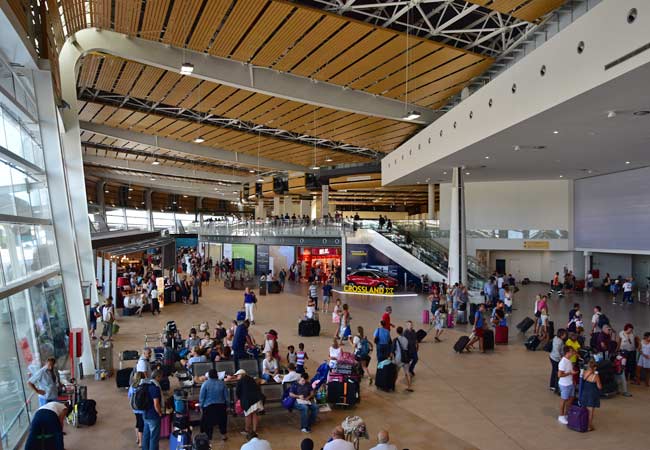
oh we were stuck in the airport!

Copenhagen was a bit expensive...

All we did was drink beer in Brussels...
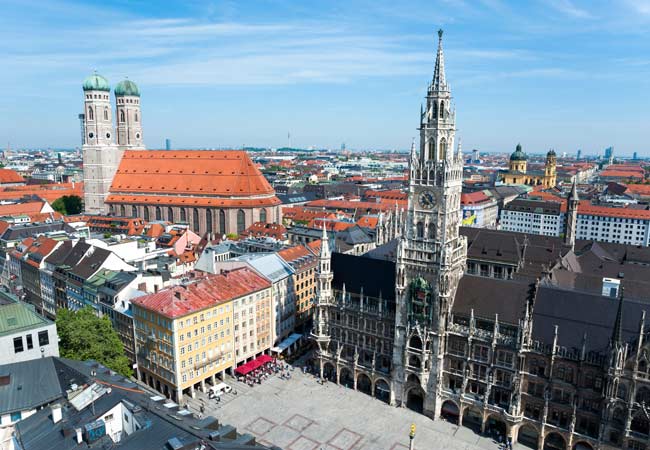
Muncih was crazy

And we got so burnt!
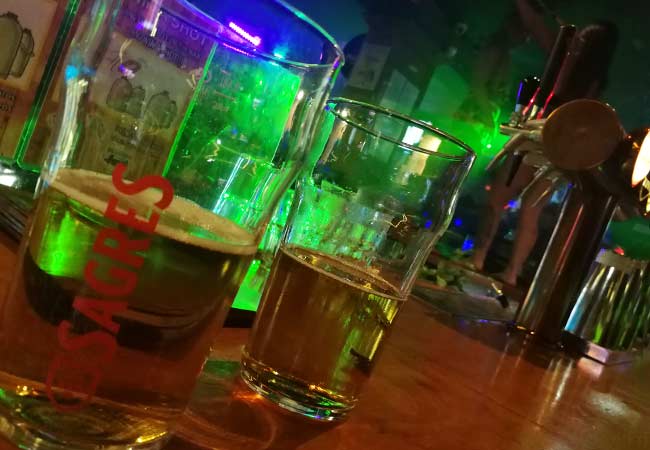
Remeber that night in Rome

oh we were stuck in the airport
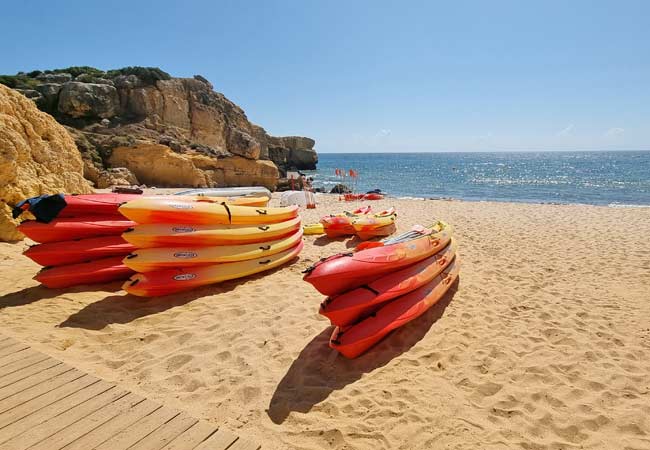
So much fun kayaking

Berlin and that group from Austria!

There was such a view from that church

And we got so burnt!

Munich was eventful, wasn't it!

Such a view from that cathedral in Florence
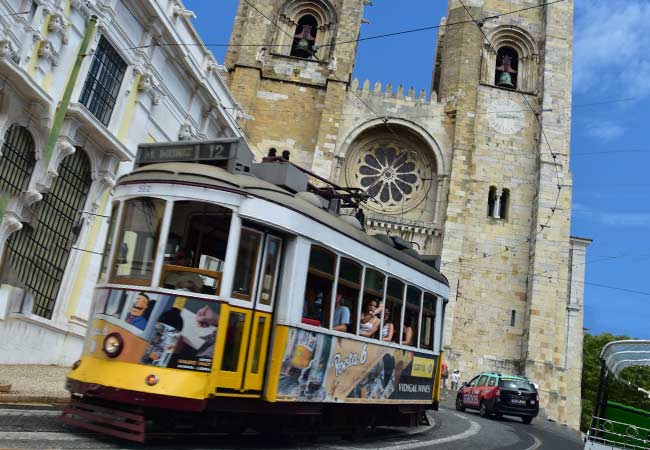
Lisbon was such so much fun

Last summer was so much fun .... x

Remeber that night in Rome

Lisbon was such so much fun

Such a view from that cathedral in Florence

Munich was eventful, wasn't it!

And we got so burnt!

Remeber that night in Rome

All we did was drink beer in Brussels...

Berlin and that group from Austria!

Can't wait to go back to Dubrovnik

Remember that boat ride in Prague

Copenhagen was a bit expensive...
